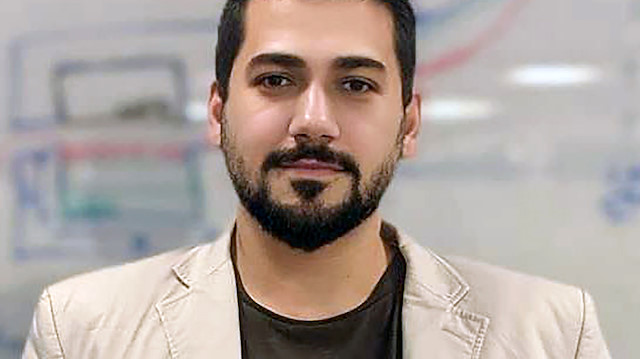
A team of scientists from the US-based Massachusetts Institute of Technology (MIT), including Turkish scientist Mehmet Kanik, developed a fiber muscle project to help ease spine disorders.
The fiber muscle project, currently underway in the MIT, has been featured on the Science magazine published by the American Association for the Advancement of Science.
"We have developed an implant which can produce enough force to support the spine with the energy taken from body heat, and suitable for the flexibility of the spine," Kanik told Anadolu Agency.
All muscles we have in our bodies work in harmony, and our project is on creating an artificial muscle, inspired by the very complex, functional, and real muscles, he said.
"The artificial muscles are produced using synthetic polymer. Combining materials with certain thermo-mechanical qualities, the purpose is to develop fiber muscles which can flex and detect movement just like human muscles do," he added.

The fibers, originally produced in Turkey by the team with the method of thermal fiber extraction, can be produced in large quantities at a very low cost in a short amount of time.
The team is currently working on a method that would enable the mass production of fibers.
"These fiber muscles are made from biocompatible materials and have a larger capacity of producing energy compared to human muscles. So the project has had a huge impact in the world, and our discoveries have been featured on the cover of the Science magazine," Kanik said.
To fasten the process of using the fiber muscles in various biomechatronic practices, the team founded a company called Kinetik Therapeutics LLC this year.
A team of experts from the MIT, Harvard University and Medical School, Brigham and Women's Hospital, Boston Children's Hospital, and Massachusetts General Hospital work together on the project, Kanik added.
"This is a scientific discovery which signals production of similar artificial muscles with various functions and capabilities. We have many possibilities ahead," said the scientist.
"The artificial muscles can be used as implants to compensate the loss of function in humans, because they are produced from artificial biocompatible materials.
"Our first goal is to treat proximal junctional kyphosis, which is a loss of balance in the spinal colon often occurring after surgeries. It is known as hunchbacks in the society. The current implants used to fix the spine are a bit scary, they place big screws and steel sticks in the spine, and it is fixed with Mersilene tapes. These implants minimize the movement capacity of the patients and lower their life quality considerably," Kanik explained the project.
He added: "The muscles we develop, on the other hand, can create enough energy to support the spine actively, in line with the flexibility of the spine. The patients won't have to go through surgery over and over, and their life quality will be enhanced. We are currently trying our designs on cadavers in MIT and Harvard Universities, to spot our flaws."
Medical equipment used in classic spine treatments are quite expensive: one steel stick can be as high as $3,000, Kanik said.
"One anterior cervical surgery can cost from $65,000 to $100,000 in the US. Every year, at least $10 million are being paid for spine surgeries in the US. And 26% of the patients have to go through surgery again. This is quite astronomical, and our team is working to develop the fiber muscles also for this reason.
"The new implants will cost at least 50% less for the patients," he stressed.
Before developing the fiber muscles, the team for months tried to prove it was theoretically possible.
When the theoretical findings are transformed into experiments, everyone, including Kanik, observed the results with a great excitement.
After the findings are published in the Science magazine, scientists, business people, and companies from all over the world have contacted the project's team members.
"Investment directors from LG Electronics visited me after our project was published in the Science magazine. I told them about the project and we discussed possible future collaborations.
"The major Chinese company Badiu, mobile phone companies, and automobile companies also contacted us," Kanik said.
The team discussed future possibilities in the fields of smart textile, robotics, and medical implementations, he noted, adding: "Upon receiving this much request for collaboration, we have asked MIT technology transfer office for help. They gave us some recommendations about what to do, and we decided to start our own company, leading to the foundation of Kinetik Therapeutics LLC."
The company is still in incubation, and the team is focusing on market share and medical practices with high added value.
Their strategy is to develop the technology further and license it to other firms with a target of dominating a market that values at least $80 million a year.
"I believe our project will be of great benefit for humanity, and we will make Turkey proud," Kanik said.














